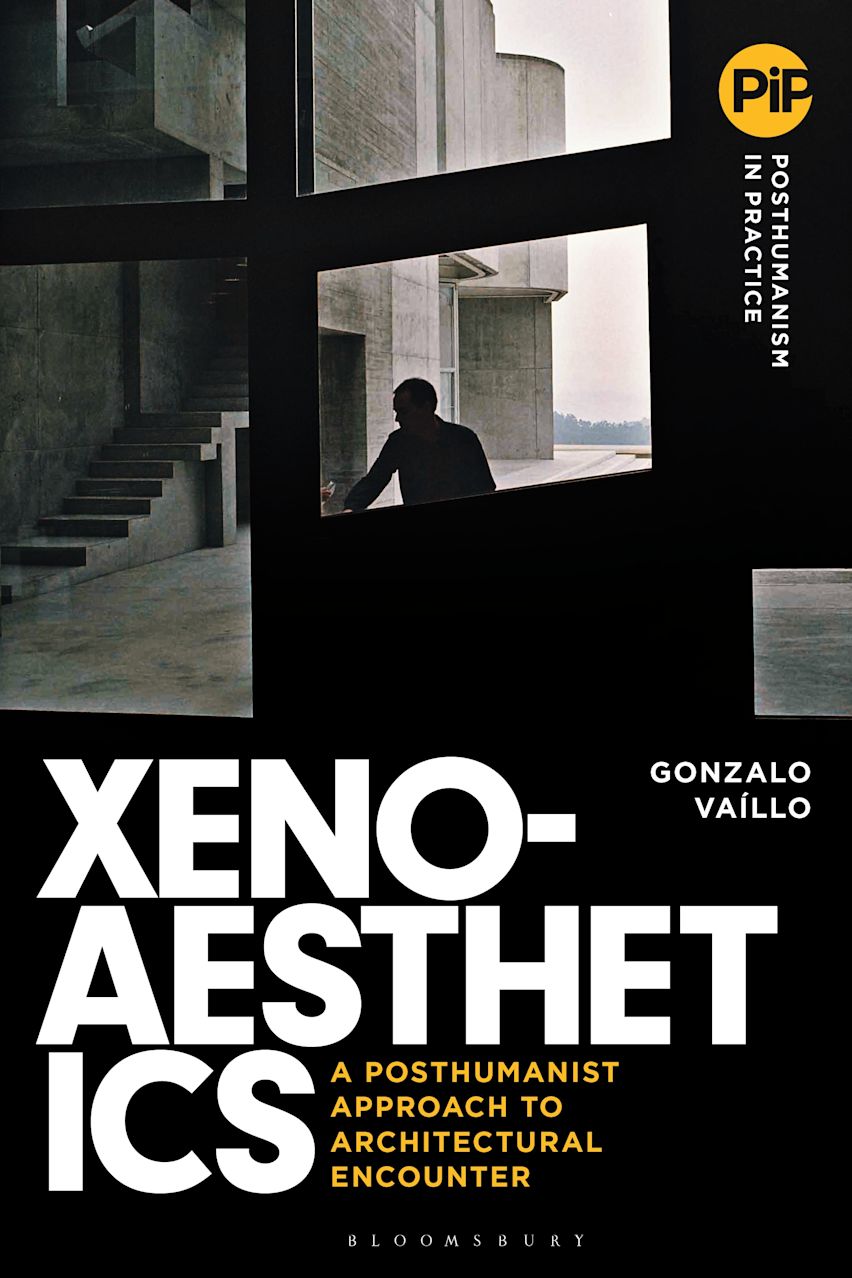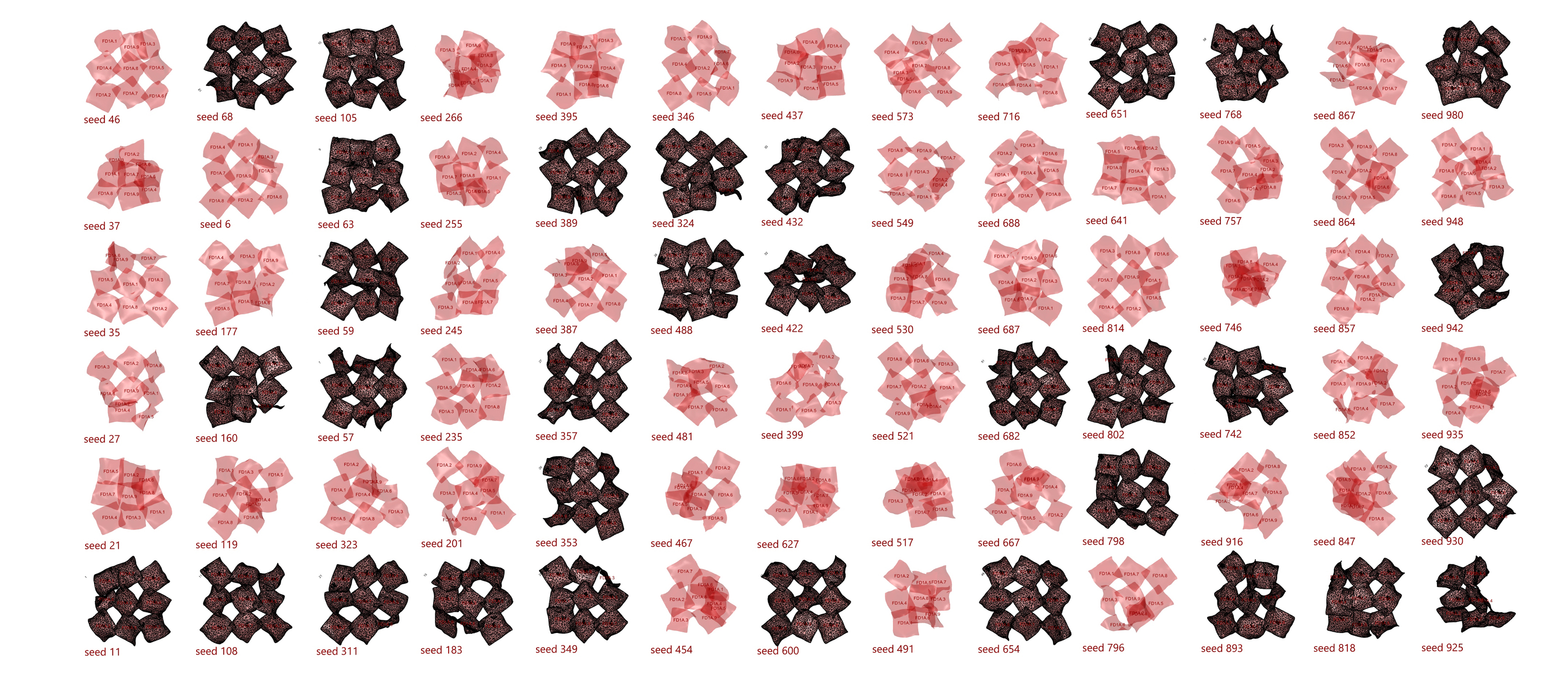
Xenoaesthetics
A Posthumanist Approach to Architectural Encounter
London: Bloomsbury, 2026.
Book︎︎︎
Xenoaesthetics: A Posthumanist Approach to Architectural Encounter examines our relationships with architecture beyond human-centric perspectives.
It challenges conventional views of architectural design and space inhabitation by exploring these experiences within the framework of the architectural project as an autonomous entity. Weaving insights from philosophy and architecture, this book delves into the conditions, roles, and implications of architectural encounters, contending that our definitions and interactions with it- while actively contributing-cannot solely determine its nature. This book conceptualizes the architectural project as a unity-multiplicity tension, introducing the concept of xenoaesthetics as a cognitive mode attuned to this structure. This approach invites readers to reimagine architectural experience as a dual action that reveals the project to us and realizes itself through us. This context not only implies disciplinary consequences for design questions but also holds socio-political significance for our everyday architectural interactions, contributing to the quest for practices and discourses on equality. Methodologically, the argument draws from Object-Oriented Ontology and the architect Enric Miralles, offering an additional retrospective crossover that enriches both references.
Xenoaesthetics serves as a resource for students, architects, scholars, and enthusiasts interested in exploring new insights on architecture beyond assumptions and prescribed value systems. It encourages a deeper understanding of the intricate relationship between humans and the architectural project.
It challenges conventional views of architectural design and space inhabitation by exploring these experiences within the framework of the architectural project as an autonomous entity. Weaving insights from philosophy and architecture, this book delves into the conditions, roles, and implications of architectural encounters, contending that our definitions and interactions with it- while actively contributing-cannot solely determine its nature. This book conceptualizes the architectural project as a unity-multiplicity tension, introducing the concept of xenoaesthetics as a cognitive mode attuned to this structure. This approach invites readers to reimagine architectural experience as a dual action that reveals the project to us and realizes itself through us. This context not only implies disciplinary consequences for design questions but also holds socio-political significance for our everyday architectural interactions, contributing to the quest for practices and discourses on equality. Methodologically, the argument draws from Object-Oriented Ontology and the architect Enric Miralles, offering an additional retrospective crossover that enriches both references.
Xenoaesthetics serves as a resource for students, architects, scholars, and enthusiasts interested in exploring new insights on architecture beyond assumptions and prescribed value systems. It encourages a deeper understanding of the intricate relationship between humans and the architectural project.
︎︎︎back to WRITING

Forma Exquisita
Esquivel, Gabriel, Jordi
Vivaldi, and Gonzalo Vaíllo. Edited by Maximiliano
Schianchi. Archivos 1. Buenos Aires: Instituto de Arquitectura, 2025.
Full book︎︎︎
This issue presents an edited and expanded transcript of the online Roundtable discussion on Form held by Gabriel Esquivel, Gonzalo Vaíllo, and Jordi Vivaldi, as part of the Exquisite Form Summer Festival of the Institute of Architecture on Friday, December 17, 2021.
︎︎︎back to WRITING

(Un)fitting Aggregations
Material-dependent Production and Spielraum of Distinct Vulcanized Fiber Pieces
Allner,
Lukas, Karolin Schmidbaur, and Gonzalo Vaíllo. In ACADIA 2024: Design Change, 1:81–92. Calgary: Association
for Computer Aided Design in Architecture, 2024.
Full article︎︎︎
This study explores the integration of
unpredictable material behavior within architectural design and production,
specifically examining the properties and potential of vulcanized fiber (VF) in
the multiple realizations of the simple design of a 3 x 3 checkered pattern. It
challenges traditional production methodologies—standardized mass production,
digital mass customization, and discrete combinatorial approach—by introducing
the notion of material-dependent production. This approach is exemplified by
the distinctive morphological and mechanical transformations that VF undergoes
during the drying production process, leading to each piece uniquely shaping
itself. The divergence between the initial design of the pattern and the
singular resulting pieces leads to an array of different and unexpected
aggregation possibilities to construct the pattern. The highly local and
situated pattern-part relation and its variability for diverse outcomes are
conceptualized following Lars Spuybroek’s notion of Spielraum or “room to
play.” This concept, understood as both physical space and space of
possibilities, is defined by the material agency embedded in the pieces and the
organizational guidance of the pattern. Methodologically, computational analysis
is employed to calculate the number of feasible pattern realizations attending
to the assembly tolerances of the morphological diversity of the VF pieces. In
this sense, the study bridges computational techniques and material specificity
to understand the threshold (or Spielraum) between the designed pattern and
material-informed parts. The findings of this study advocate for a reevaluation
of material agency in architectural processes, demonstrating that an embrace of
material contingency and indeterminacy enriches architectural production and
creativity.
︎︎︎back to WRITING

Openness and Fragments
in Design Technology and Digital Production: An Architecture Anthology, edited by Gabriel Esquivel, 153–59. 2024. New York and London: Routledge.
Book︎︎︎
Whether in teaching, in writing, or in the work of my office MORPHtopia, my approach to architectural design has been profoundly influenced in recent years by philosophies that account for the gap between reality and appearance, especially Object-Oriented Ontology. So far, this motivation has revolved around two flanks. The first is an ontological interest in the architectural project (abbreviated AP) as an entity in itself, i.e., as an object with an autonomous status of existence. The second investigates what such autonomy implies for cognition at the epistemological level, especially for the architect in the design process and for the inhabitant in its experience and use. This has led to the search for an architecture capable of inducing an immaterial awareness of its existence and, at the same time, open to interpretation and free occupation, all this through a design methodology based on irritable and irritating fragments. [...]
